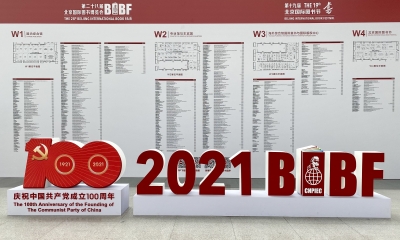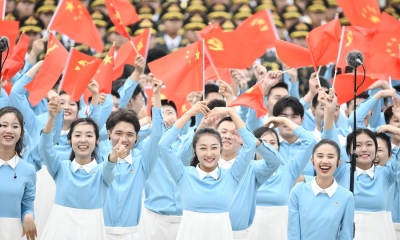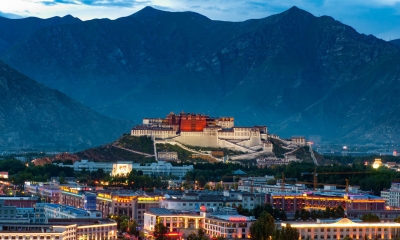The Recipe of China’s Poverty Alleviation Miracle

Socialism with Chinese characteristics has ultimately developed a new model of political economy with a proven track record in delivering high-quality development that is more fairly distributed across society.
For thousands of years, China was a nation plagued by poverty. Up until the late 1970’s, more than 770 million people were living below the poverty line, according to the World Bank.
By the end of 2020, China had achieved a “complete victory” in its fight against poverty. In December 2020, China announced that all 98.99 million rural residents from impoverished villages had been lifted out of absolute poverty.
UN General Secretary Antonio Guterres hailed China’s transformation as “the greatest anti-poverty achievement in history”. “Every time I visit China,” he said, “I am stunned by the speed of change and progress.”
The question everybody wants to know is how exactly did China do it? What is China’s secret?
To understand China’s ‘secret’, we must first look back to 1978, when the period of Reform and Opening-up began. Deng Xiaoping, the chief architect who initiated China’s market-oriented reforms, famously said “Poverty is not socialism. Socialism means eliminating poverty.”
Since the economic reforms began, China has witnessed unprecedented economic growth and has lifted 740 million people out of poverty. Decades of rapid growth has served as the bedrock of the country’s development, without which China’s poverty alleviation ‘miracle’ would not have been possible. That said, economic development alone was not responsible for eliminating poverty.
Ban Wei, deputy director of the project China’s Poverty Reduction Study, noted that the market is ultimately unable to deliver for those at the bottom. In an address to the International Forum on Poverty Governance and Development Towards Modernization, Ban explained that many of China’s rural poor were excluded from the market due to their remote location.
The market is a decisive and important resource, he said. “But market economics is based on efficiency and the market is unfriendly to those people in poverty.”
Professor Robert Walker of the China Academy of Social Management at Beijing Normal University unpacked this point further. “The market will always favour the city because the city brings economies of scale,” he told China Focus.
Under the leadership of President Xi Jinping, China embarked on an all-out war against poverty in late 2012. Officials in Beijing under the leadership of the Communist Party of China, together with the private sector and the public in pursuit of one central aim: The elimination of absolute poverty by 2020.
Local authorities largely look the lead over regional development, adopting a two-pronged approach that weaved together large-scale infrastructure projects with “targeted poverty alleviation measures”.
Targeted poverty alleviation, explains Dr. Robert Lawrence Kuhn, means individualized attention.
Using a standardized criterion — which looked at income, opportunity, and access to basic necessities — all households below a certain threshold were assessed on whether they met the classification of extreme poverty. The root causes of a family’s poverty were then explored and a customized plan was developed to ensure all received the support needed.
“Every poor family has its own file, a literal notebook, each with its own targeted plan to lift each above the line of absolute poverty,” said Kuhn.
More than 250,000 teams were dispatched to offer on-the-ground support. In total, more than three million people were sent to the country’s most remote villages as special commissioners for poverty relief.
A common cause for many in poverty was found to be their location. Take the Tibet Autonomous Region for example. Tibet has historically been China’s poorest region, mainly due to its remote and hostile environment. Known as the “Roof of the World”, the Tibetan plateau sits at an average elevation of 15,000ft and is surrounded by one of the most formidable mountain ranges on the planet.
Living in the remote highlands meant being cut off from essential public amenities, such as healthcare and education. It meant being unable to grow a variety of stable crops. And it also meant being restricted from engaging in trade and commerce.
To alleviate this problem, local authorities launched an ambitious relocation program in 2013. Following the example of other remote regions in China that incorporated relocation program’s with a mass-infrastructure drive, Tibet’s most impoverished people were relocated to newly built communities with full access to essential services. More than 260,000 residents across the autonomous region took advantage of the scheme. Within six years Tibet had shaken off the trappings of poverty.
China has committed to sharing its knowledge and methods with the developing world. It has made clear, however, that although China’s methods worked for China, other countries must follow their own path in line with their own respective conditions.
The key to China’s development then is not any particular policy or method, but rather its political economy. To understand China’s success in poverty alleviation, researchers often refer to the so-called “5 Ds”. They are: determined leadership, detailed blueprint, development orientated, data-based governance, and decentralised delivery.
The “determined leadership” of President Xi Jinping and the CPC has been noted by the UN Secretary-General and so bears not repeating. Its “detailed blueprint” refers to the plans sketched out by national and provincial-level leaders, some of which stretch into the decades. Local leaders were largely responsible for the implementation and delivery of the detailed plans, and this is where “decentralised delivery” comes in.
“Data-based governance” refers to the more than 100 million files created on impoverished households. And “development orientated” refers to the pathway of shaking off poverty through development, and the government’s intervention in the market to promote more equitable growth.
With clear national priorities and using the power of the state to intervene, it is possible to organize the market in the people’s interest, to use some strengths of the market, but to control some of its disadvantages, Professor Walker explained. The end result is that “you can achieve the best of both worlds and benefit all sections of society”, he added.
China’s secret recipe lies in its creation of a powerful synergy between the state, market and society. Socialism with Chinese characteristics has ultimately developed a new model of political economy with a proven track record in delivering high-quality development that is more fairly distributed across society.
 Facebook
Facebook
 Twitter
Twitter
 Linkedin
Linkedin
 Google +
Google +







